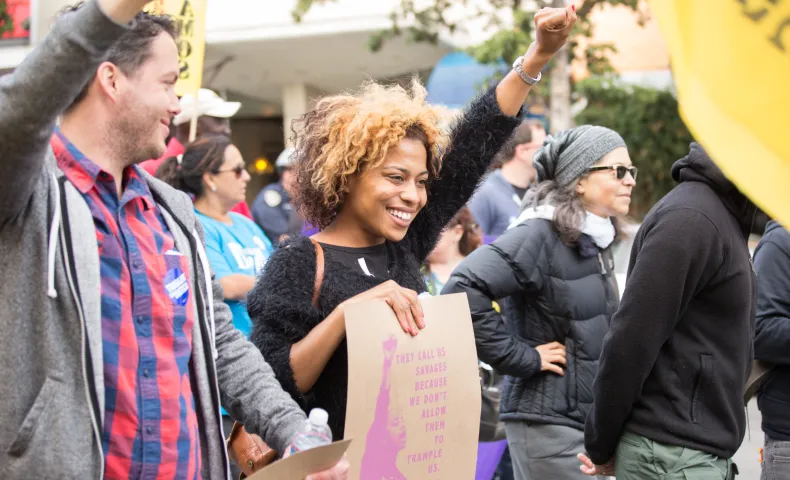
Imagine a California Where We All Belong
When I walked into the Fannie Lou Hamer Center for the first time, I instantly felt the warmth and comfort of this community space for Black students at UC Berkeley. Tucked away in a lesser-known part of campus, it’s a small island of inclusion and a place to celebrate Blackness in a world that can be cruel to Black young people. The portrait of Fannie Lou Hamer and the images of Black student activists on the walls spoke to me. I saw some students doing homework in groups and others just hanging out and laughing. The sun was shining through the windows. To me, this center is a real life example of what belonging and inclusion look like.
For more on the Fannie Lou Hamer Center, check out our interview with its Director, Takiyah Jackson.
Who belongs? It is a question at the heart of so many of the policy conversations and public debates we are having in California and all across the country today. Who belongs in the United States? Who belongs at our public universities? Who belongs in our democracy? Who belongs in our government budgets?
If the latest demographic data on the California population reveal anything, it’s the need to keep pushing for belonging for people and groups that historically have not had equal access or equal opportunities. Nearly four in 10 Californians (39%) are Latinos; in all, almost two-thirds are people of color. Ten million of us—or 27% of the population—are immigrants.
In this newsletter, you’ll read about good work that is happening across many fronts to make California a more inclusive state where belonging is reflected in our policies, institutions, systems and public budgets.
As the most diverse state in the nation, California has an opportunity to show the rest of the country and the world what a multiracial democracy looks like. We can expand equal access to opportunity. We can open new doors to voting, civic action and representation for all communities. And we can be a leader in making our colleges and universities more welcoming and more inclusive (and more affordable) for immigrants and Black and Native/Indigenous young people who continue to face real barriers to a higher education degree.
At Haas, Jr., we are learning so much from our partners—including Takiyah Jackson, the director of the Fannie Lou Hamer Center at Berkeley—about what inclusion really looks like. At a time of so much division, this is exciting, necessary and affirming work.
Sometimes, it feels like California has more problems than answers. But I do believe we have leaders, students and residents across the state who are asking the right questions: Who belongs? And who decides? And how do we create a society and an economy where all people have equal opportunities to find a good education, a decent job, and places where they can feel supported and be their full, true selves?
We look forward to working with you to create a California and a country where everyone belongs.